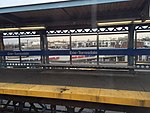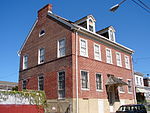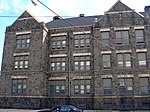Northeast Catholic High School
Northeast Catholic High School opened in 1926 as Northeast Catholic High School for Boys, and was located at 1842 Torresdale Avenue, Philadelphia, Pennsylvania. It was under the administration of the high school system of the Roman Catholic Archdiocese of Philadelphia and its sports teams participated in the Philadelphia Catholic League. During its history, at one point, it had the largest student body of any Catholic boys school in the world, and today it is known for having the largest number of all-male alumni of any high school in the world. Northeast Catholic followed the Salesian tradition, which means that "North's" priests followed in the footsteps of Saint Francis de Sales in their day-to-day actions and mission statement. The school closed permanently in June 2010.
Excerpt from the Wikipedia article Northeast Catholic High School (License: CC BY-SA 3.0, Authors).Northeast Catholic High School
East Hunting Park Avenue, Philadelphia
Geographical coordinates (GPS) Address Nearby Places Show on map
Geographical coordinates (GPS)
| Latitude | Longitude |
|---|---|
| N 40.005555555556 ° | E -75.095 ° |
Address
Mariana Bracetti Academy Charter School
East Hunting Park Avenue
19124 Philadelphia
Pennsylvania, United States
Open on Google Maps








